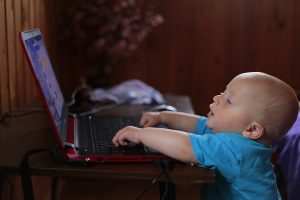Creating a supportive and inclusive environment for children with disabilities in schools is crucial for their overall well-being and academic success. These students, much like their peers, thrive when they feel understood, accepted, and part of a community. To foster this environment, schools need to implement strategies that encourage positive peer interactions. Let’s dive deeper into how schools can achieve this, with practical tips and real-life examples. Educating classmates about different disabilities and encouraging acceptance can help foster a sense of community and respect. Regular workshops or assemblies where students can learn about various disabilities can be incredibly effective. For instance, inviting guest speakers or using interactive activities can personalize these learning sessions, making them more relatable for students. A school in Portland, Oregon, implemented a monthly “Disability Awareness Day,” where students engage in activities simulating different disabilities. This initiative led to a significant increase in empathy and understanding among students.
Implementing Peer Buddy Programs
Peer buddy programs pair children with disabilities with typically developing peers who serve as mentors and friends. These programs not only facilitate social interactions but also promote a sense of belonging and support for children with disabilities.
Structured Activities
To make these programs successful, structure is key. Plan specific activities for buddies to engage in, such as shared lunchtimes or collaborative art projects. This gives them a purpose and makes interactions less awkward. Think about activities like setting up a buddy reading program where pairs or small groups read books together, discussing the themes and characters. This not only improves literacy skills but also enhances social bonding.
Training Sessions
Train peer buddies on how to interact positively and supportively with their partners. This might include understanding non-verbal cues or learning patience and empathy. A middle school in Chicago found success by pairing students during physical education classes. The buddies participated in team sports, which naturally encouraged communication and teamwork, leading to friendships that extended beyond the classroom.
Empowering Students to Be Allies
Empowering students to be allies to their peers with disabilities can create a culture of support and understanding in schools. Encourage students to speak up against bullying or discrimination by creating campaigns and having open discussions in classrooms.
Ally Workshops
Conduct workshops that teach students how to be effective allies. Role-playing scenarios can help students practice responding to real-life situations. For example, students can role-play how to intervene when witnessing a peer being excluded or bullied. This not only prepares them for such scenarios but also builds a strong foundation for empathy and proactivity.
Recognition Programs
Acknowledge and reward students who actively support their peers with disabilities. This not only encourages more students to become allies but also highlights the positive behaviors you want to cultivate. A high school in New York initiated a “Be An Ally” program, where students received badges and recognition for their efforts in supporting peers with disabilities. This program helped create a more inclusive atmosphere and reduced instances of bullying.
Providing Social Skills Training
Children with disabilities may benefit from social skills training to help them navigate social interactions more effectively. Teaching communication strategies, conflict resolution skills, and self-advocacy can equip them with the tools they need to interact positively with their peers.
Tailored Lessons
Develop lessons that are tailored to the specific needs of the students. For example, role-playing common school scenarios can be beneficial. Consider creating scenarios that mimic real-life situations, like resolving a disagreement over shared resources during a group activity.
Peer Involvement
Involve peers in these sessions to create a real-world practice environment. This also helps peers understand the challenges their classmates might face. A school district in Texas incorporated social skills training into their curriculum with great success. Students participated in weekly sessions that included both individual and group exercises, leading to improved social interactions and a stronger sense of community.
Encouraging Peer Collaboration
Encouraging peer collaboration through group projects, cooperative learning activities, and group discussions can help children with disabilities feel valued and included. Working together towards a common goal fosters teamwork, communication, and mutual respect among peers.
Diverse Grouping
When assigning groups, ensure diversity so that all students, regardless of their abilities, have the chance to contribute and learn from each other. Consider creating groups based on interests rather than abilities to encourage natural interaction and engagement.
Clear Roles
Assign clear roles in group projects to ensure everyone has a part to play. This can help children with disabilities feel more included and integral to the team’s success. A primary school in Seattle found success with a project-based learning model. By creating mixed-ability groups for science projects, students learned to rely on each other’s strengths, leading to more inclusive interaction and cooperation.
Monitoring and Intervention
Regular monitoring of peer interactions and interventions when needed are essential to ensuring a positive and inclusive school environment. Teachers and school staff should be proactive in addressing any instances of bullying, exclusion, or negative behavior towards children with disabilities.
Observation
Regularly observe interactions during unstructured times, such as recess or lunch, to identify any issues early. Teachers might take turns supervising and noting any patterns of behavior that could indicate exclusion or bullying.
Feedback Mechanisms
Create anonymous feedback systems where students can report issues or suggest improvements related to inclusivity. This could be an online form or a physical suggestion box located in a common area.
Immediate Action
When negative interactions are observed, address them immediately, and provide support and guidance to all students involved. A school in Boston implemented a “Safe Space” initiative where students could report issues confidentially. This led to quicker interventions and a noticeable improvement in school climate.
Leveraging Technology
Incorporating technology can provide additional support and opportunities for positive peer interactions. Tools like communication apps and inclusive educational software can bridge gaps between students with disabilities and their peers.
Assistive Technologies
Use technologies such as speech-to-text apps or interactive whiteboards to assist students with disabilities in participating more fully in class activities. These tools can be particularly beneficial for students with communication challenges, allowing them to express themselves more freely and confidently.
Virtual Pen Pals
Establish virtual connections with schools in different regions, allowing students to interact with peers from diverse backgrounds and abilities, broadening their perspectives. A school in San Francisco used a program called “Tech Buddies,” where students were paired based on their interest in technology. They collaborated on digital projects, which not only helped in skill-building but also in creating lasting friendships.
Parental and Community Involvement
Building an inclusive environment extends beyond the school walls. Engaging parents and the wider community is essential for creating a comprehensive support system for students with disabilities.
Parent Workshops
Conduct workshops to educate parents on how they can support their children in forming positive peer relationships. These sessions can cover topics like facilitating playdates and encouraging participation in community events.
Community Events
Organize community events that celebrate diversity and inclusion, such as cultural festivals or inclusive sports days. In a suburb of Denver, schools partnered with local businesses to host an annual “Inclusion Fair,” where students with disabilities showcased their talents. This not only boosted their confidence but also enhanced community understanding and support.
Creating a School Culture of Inclusion
Ultimately, fostering positive peer interactions requires creating a school culture that values inclusion. This involves commitment from the entire school community—teachers, students, parents, and administrators.
Inclusive Policies
Develop and implement policies that explicitly promote inclusion, and make sure they are communicated clearly to everyone in the school community. Schools could create an inclusion task force that regularly reviews and updates these policies based on feedback and changing needs.
Professional Development
Provide ongoing training for teachers and staff on inclusive education practices and how to support students with disabilities effectively. This training can include workshops, seminars, and even online courses to cater to different learning preferences.
Celebrating Successes
Regularly celebrate successes in inclusion, whether it’s through assemblies, newsletters, or social media. Highlight stories of positive peer interactions and the benefits they bring. Sharing these successes can inspire other schools and communities to adopt similar practices.
By focusing on these strategies, schools can create a nurturing environment where all students, regardless of their abilities, can interact positively and reach their full potential. The journey towards inclusivity is ongoing, and every step taken can have a profound impact on the lives of students with disabilities, their peers, and the broader school community. Through sustained effort and commitment, schools can become places where diversity is celebrated and every student feels they belong.



